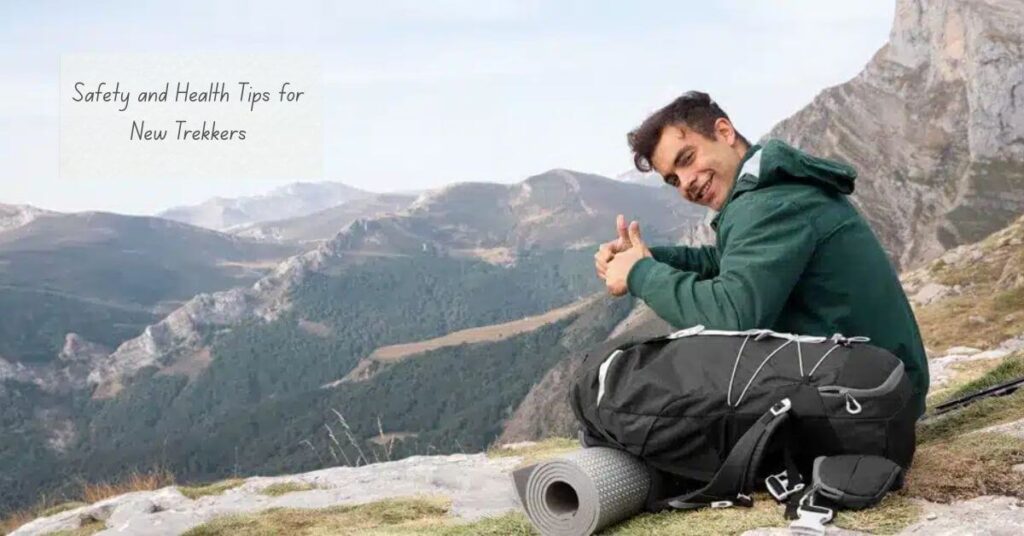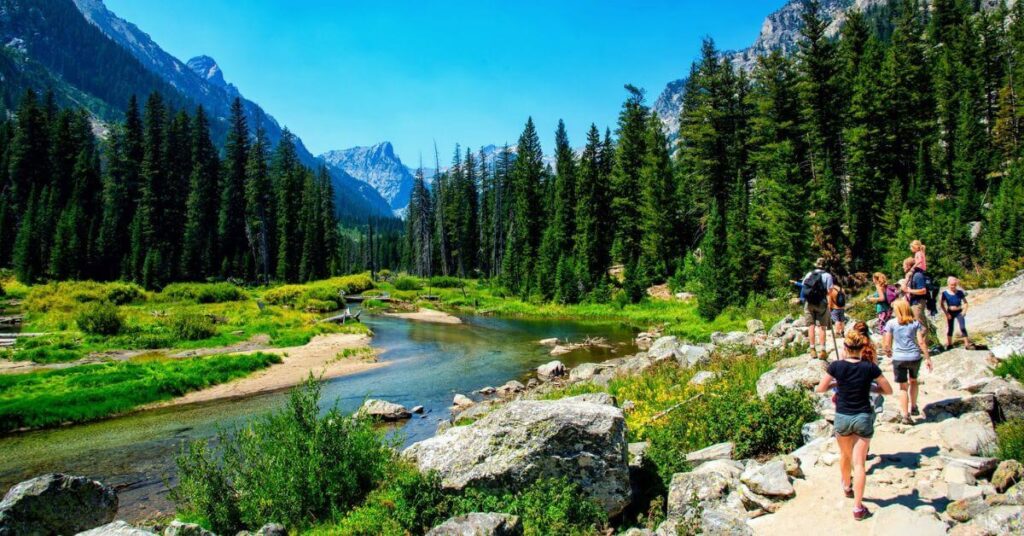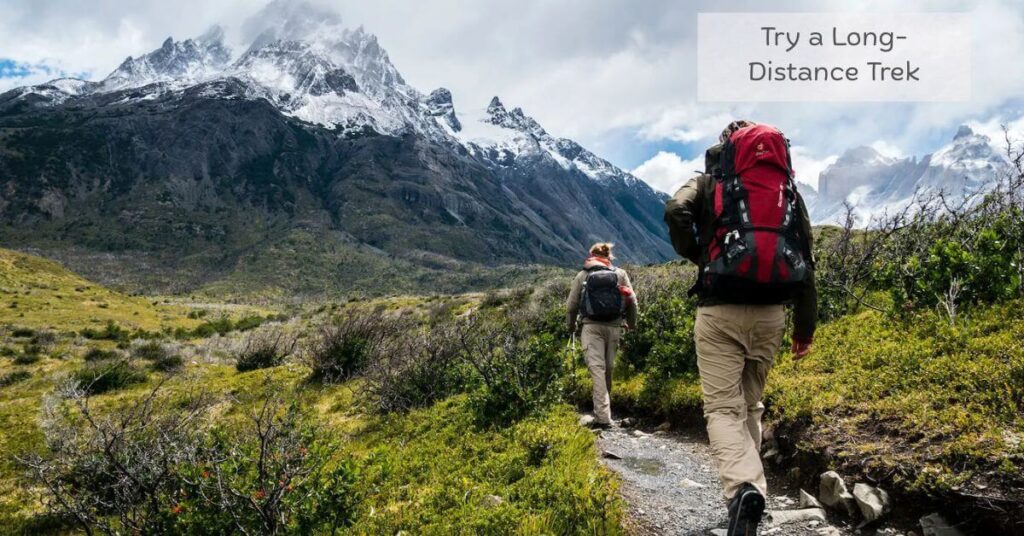Embarking on a long-distance trek is one of the most rewarding ways to experience nature, challenge yourself, and make unforgettable memories. Contrary to what many believe, you don’t need to be a seasoned hiker or outdoor expert to enjoy these journeys. In fact, some of the world’s most iconic trails are among the Best Long-Distance Treks for Beginners, offering manageable terrain, reliable waymarking, and comfortable accommodation options.
The Best Long-Distance Treks for Beginners balance adventure with accessibility. You’ll gain confidence, build stamina, and soak up stunning scenery without feeling overwhelmed. Whether you dream of walking through the rolling hills of Scotland or along the sunny paths of Spain, there’s a beginner trek for every taste and fitness level.
What Makes a Trek Beginner-Friendly?
Not all treks are created equal. The best long-distance treks for beginners have several features in common:
- Well-marked and maintained trails
- Moderate daily distances (usually 10–20 km per day)
- Reliable accommodation and food options along the route
- Easy-to-navigate terrain, with gentle gradients and minimal technical sections
- Access to public transport or support services
- Welcoming community of fellow trekkers
These features ensure you can focus on enjoying your journey, knowing support and comfort are never far away.
Essential Benefits of Long-Distance Trekking
Choosing one of the best long-distance treks for beginners brings more than just scenic views:
- Boosts physical health, stamina, and cardiovascular fitness
- Reduces stress and improves mental wellbeing
- Fosters mindfulness through slow, immersive travel
- Offers opportunities for social connection with other walkers
- Teaches self-reliance and confidence in new environments
- Encourages appreciation for diverse landscapes and cultures
- Provides a true sense of accomplishment at journey’s end
A well-chosen trek can change how you see yourself and the world around you.
Key Features to Look for in a Beginner Trek
When choosing the Best Long-Distance Treks for Beginners, focus on trails that can be finished in under two weeks with short, manageable daily sections and easy terrain. Good waymarking, convenient access, and comfortable accommodations are key.
Local support is a bonus. These features make the Best Long-Distance Treks for Beginners enjoyable and suited to your fitness and comfort level.
When selecting among the best long-distance treks for beginners, focus on these practical details:
- Trail length: Aim for trails that can be completed in under two weeks
- Daily stages: Choose routes with short, achievable sections
- Terrain: Opt for flat or rolling terrain over steep, technical paths
- Waymarking: Reliable signs make staying on track stress-free
- Access: Look for trails near towns or with regular transport links
- Accommodation: Refuges, hostels, or guesthouses en route add comfort
- Local support: Availability of guides, shops, or transfer services
Matching the trail to your fitness and comfort level ensures a successful first trek.
Preparing for Your First Long-Distance Trek
Preparation is the foundation of a positive trekking experience. Here’s what you need to do:
- Choose the right trek: Match the trail’s length and difficulty to your ability
- Plan your itinerary: Research daily stages, rest stops, and accommodation
- Check the season: Pick the best time for weather and trail conditions
- Train beforehand: Gradually increase walking distance and carry a pack
- Book ahead: Reserve lodgings and key services if needed
- Inform family or friends: Let someone know your route and timeline
- Organise travel insurance: Cover trekking and unexpected events
A little planning goes a long way in ensuring your trek is enjoyable and safe.
Packing List for Long-Distance Treks
When preparing for the Best Long-Distance Treks for Beginners, packing wisely is essential for comfort and safety. Essentials include a comfortable 30–40L backpack, weather-appropriate clothing, moisture-wicking socks, sturdy hiking boots, and a lightweight sleeping bag.
Trekking poles, water bottles, purification tablets, a first aid kit, maps or a GPS device, and healthy snacks are also must-haves. For the Best Long-Distance Treks for Beginners, don’t forget sun protection, toiletries, travel towels, a camera, chargers, and copies of key documents, adjusting your packing to suit the trail and climate.
Packing light but smart is key. Here’s a list for the best long-distance treks for beginners:
- Comfortable backpack (30–40L)
- Weather-appropriate clothing (base layers, rain gear, hat, gloves)
- Moisture-wicking socks and underwear
- Sturdy, well-fitted hiking boots
- Lightweight sleeping bag or liner
- Trekking poles
- Water bottle and purification tablets
- Compact first aid kit
- Headlamp or flashlight
- Maps or GPS device
- Healthy snacks and energy bars
- Travel towel
- Personal toiletries
- Sun protection (hat, sunglasses, sunscreen)
- Lightweight camera or smartphone
- Chargers and power bank
- Copies of key documents
Always adjust your packing to the trail and climate you’ll be trekking.
Safety and Health Tips for New Trekkers

Safety is vital on the Best Long-Distance Treks for Beginners. Start slow and increase your distance gradually, stay hydrated, and take regular snack breaks. Watch your step on uneven ground, carry a basic first aid kit, and dress in layers for changing weather.
Always inform someone of your daily plans, and respect wildlife. Avoid trekking alone in remote areas, know your limits, and follow local trail guidelines. Preparation and caution make the Best Long-Distance Treks for Beginners enjoyable and incident-free.
Staying safe on the trail is crucial for all beginners:
- Start slow and increase distance gradually
- Stay hydrated and take regular snack breaks
- Watch your step on uneven or slippery ground
- Carry a basic first aid kit
- Dress in layers to adjust to changing weather
- Inform someone of your daily plans
- Respect wildlife and local customs
- Avoid trekking alone in remote areas
- Know your limits rest if you’re tired
- Follow all local trail guidelines
Preparation and caution will keep your adventure enjoyable and incident-free.
The Best Long-Distance Treks for Beginners – Top Picks Worldwide
The Best Long-Distance Treks for Beginners include routes like the Camino de Santiago in Spain, West Highland Way in Scotland, and the Laugavegur Trail in Iceland, all known for manageable distances and clear signage.
Other top picks are Australia’s Overland Track, Tour du Mont Blanc, Kumano Kodo, Lycian Way, the Jordan Trail, John Muir Trail, and the Great Ocean Walk. These Best Long-Distance Treks for Beginners combine stunning scenery, welcoming communities, and accessible paths.
1. Camino de Santiago, Spain
A world-famous pilgrimage route, the Camino offers various trails through Spain. The most popular, the Camino Francés, is well-marked and dotted with albergues (hostels). Daily stages are manageable, and you’ll meet trekkers from around the globe.
2. West Highland Way, Scotland
This classic Scottish trek runs 96 miles from Milngavie to Fort William. The trail is clearly marked and features gentle gradients, charming villages, and beautiful lochside views. Ample accommodation makes it perfect for first-timers.
3. Laugavegur Trail, Iceland
Known for colourful mountains and geothermal wonders, the Laugavegur Trail is a 55-kilometre adventure between Landmannalaugar and Þórsmörk. It’s accessible for beginners in summer, with mountain huts along the way.
4. Overland Track, Australia
Tasmania’s Overland Track showcases lakes, rainforests, and rugged peaks over 65 kilometres. The route is well-signposted and suitable for first-time trekkers, especially in summer. Permits are required, and group trekking is common.
5. Tour du Mont Blanc, Europe
Looping through France, Italy, and Switzerland, the Tour du Mont Blanc spans 170 kilometres. It offers varied scenery, well-marked trails, and a network of refuges. Many sections can be customised for shorter walks.
6. Kumano Kodo, Japan
This UNESCO World Heritage pilgrimage consists of several routes, with the Nakahechi Route ideal for beginners. Expect forested paths, historic shrines, and welcoming guesthouses along the way.
7. The Lycian Way, Turkey
Stretching along Turkey’s Mediterranean coast, the Lycian Way features ancient ruins, pine forests, and seaside views. The path is well-marked and has sections suitable for less-experienced trekkers.
8. The Jordan Trail, Jordan
The Dana to Petra section is especially popular with beginners, offering breathtaking desert landscapes, Bedouin hospitality, and moderate terrain over 80 kilometres.
9. John Muir Trail, USA
Running through California’s Sierra Nevada, the John Muir Trail is best tackled in sections by beginners. You’ll see granite peaks, alpine lakes, and pristine wilderness. Prepare for permits and varying conditions.
10. Great Ocean Walk, Australia
This coastal trek in Victoria follows rugged cliffs and sandy beaches over 100 kilometres. Facilities and signage are excellent, and daily sections can be tailored to your fitness level.
Best Long-Distance Treks for Beginners
| Trek Name | Country/Region | Distance | Terrain | Accommodation | Difficulty | Best Season |
|---|---|---|---|---|---|---|
| Camino de Santiago | Spain | 780 km* | Rolling | Hostels/Hotels | Easy-Mod | Spring/Autumn |
| West Highland Way | Scotland | 154 km | Hills | Inns/B&Bs | Easy-Mod | May-Sept |
| Laugavegur Trail | Iceland | 55 km | Mixed | Huts/Campsites | Moderate | June-Aug |
| Overland Track | Australia (Tasmania) | 65 km | Varied | Huts/Campsites | Moderate | Nov-April |
| Tour du Mont Blanc | France/Italy/Switz. | 170 km | Mountains | Refuges/Hotels | Mod-Easy | June-Sept |
| Kumano Kodo | Japan | 68 km (main) | Forest/Hills | Guesthouses | Easy-Mod | Mar-May, Oct |
| Lycian Way | Turkey | 540 km* | Coastal | Pensions/Camps | Easy-Mod | April-June |
| Jordan Trail | Jordan | 80 km (Dana) | Desert | Camps/Hotels | Easy-Mod | Mar-May, Oct |
| John Muir Trail | USA (California) | 340 km | Mountain | Campsites | Mod-Diff | July-Sept |
| Great Ocean Walk | Australia (Victoria) | 100 km | Coastal | Huts/Campsites | Easy-Mod | Sept-May |
Budget-Friendly Long-Distance Treks
Budget-friendly options like the Camino de Santiago, with affordable hostels and communal meals, and Kumano Kodo, featuring modest guesthouses and local food, make trekking possible for everyone.
The West Highland Way offers camping or B&Bs and easy transport, while the Great Ocean Walk and Lycian Way provide self-catering huts and budget beach camps. These accessible choices ensure the Best Long-Distance Treks for Beginners are within reach for all adventurers.
Not every trek has to break the bank. Many beginner trails offer affordable options:
- Camino de Santiago: Low-cost hostels, communal meals, and simple gear.
- Kumano Kodo: Modest guesthouses and local eateries.
- West Highland Way: Camping or B&Bs, accessible by public transport.
- Great Ocean Walk: Self-catering huts and budget campsites.
- Lycian Way: Family pensions and low-cost beach camps.
Budget-friendly options make these treks accessible for every adventurer.
Scenic Treks with Easy Terrain

The Best Long-Distance Treks for Beginners include England’s Dales Way, Portugal’s Fishermen’s Trail, Canada’s Bruce Trail, and Japan’s Shikoku Pilgrimage. These Best Long-Distance Treks for Beginners offer beautiful rivers, coastal views, forests, and temple routes, all with easy, non-technical paths for new trekkers.
Some of the best long-distance treks for beginners are known for their gentle landscapes:
- The Dales Way, England: Follows rivers and valleys, dotted with villages.
- Fishermen’s Trail, Portugal: Coastal paths with stunning ocean views.
- Bruce Trail, Canada: Forest and escarpment scenery, well-marked and easy.
- Shikoku Pilgrimage, Japan: Peaceful routes linking temples and rural towns.
These trails offer breathtaking scenery without technical challenges.
Cultural and Historic Long-Distance Treks
Long-distance trekking is not just about the landscape it’s about stories, heritage, and people:
- Camino de Santiago: Medieval towns, cathedrals, and a centuries-old tradition.
- Kumano Kodo: Ancient shrines, traditional inns, and rural Japanese culture.
- Via Francigena, Italy: Roman roads, vineyards, and charming Italian villages.
- Inca Trail, Peru: Iconic ruins, cloud forests, and Andean traditions.
Cultural treks enrich your journey, blending history with natural beauty.
Group vs Solo Trekking for Beginners
The Best Long-Distance Treks for Beginners offer two great options: solo trekking gives total freedom over your pace, solitude for reflection, and a sense of accomplishment. Group trekking, on the other hand, provides social support, expert guidance, and shared planning. For many new trekkers, the Best Long-Distance Treks for Beginners are even more enjoyable when experienced with a friendly group.
Both solo and group treks have unique benefits:
Solo trekking:
- Total freedom over pace and schedule
- Solitude for self-reflection and mindfulness
- Greater challenge and sense of accomplishment
Group trekking:
- Built-in social support and companionship
- Guided safety and expert advice
- Shared logistics, meals, and planning
For many beginners, starting in a group offers reassurance and a fun way to meet new friends.
Training and Fitness for First-Time Trekkers
For the Best Long-Distance Treks for Beginners, selecting the right gear is crucial. Supportive, waterproof hiking boots, a lightweight backpack, trekking poles, and layered clothing make a big difference.
Add rain gear, a compact sleeping system, and essentials like a map and first aid kit. Proper gear ensures the Best Long-Distance Treks for Beginners are comfortable and frustration-free.
Preparing your body is crucial for a positive experience:
- Start training 8–12 weeks before your trek
- Walk or hike 3–5 times per week, increasing distance gradually
- Practice with a loaded backpack
- Include stairs or hills for stamina
- Stretch regularly to improve flexibility
- Build core strength with basic exercises
- Rest and recover between sessions
A steady training plan helps prevent injuries and boosts confidence for your first trek.
Gear and Footwear Guide
The right gear makes all the difference:
- Hiking boots: Choose supportive, waterproof, and broken-in shoes
- Backpack: Lightweight, with padded straps and hip belt
- Trekking poles: Reduce strain on knees and improve balance
- Layered clothing: Adjust for weather changes
- Rain gear: Lightweight, packable jackets and trousers
- Sleeping system: Lightweight sleeping bag or liner
- Essentials: Map, compass, first aid, headlamp
Quality gear prevents blisters, soreness, and frustration on the trail.
Tips for Choosing Your Ideal Long-Distance Trek
Not sure where to start? Consider these tips:
- Assess your current fitness level and health
- Choose a trail with varied landscapes for extra motivation
- Research trail facilities, accommodation, and transport
- Join online trekking forums for advice and inspiration
- Read recent trip reports or blogs for firsthand insights
- Plan extra days for rest or sightseeing
Finding the best match ensures you love every step of your journey.
Mistakes to Avoid on Your First Trek
When starting the Best Long-Distance Treks for Beginners, avoid overpacking by sticking to the essentials, and always check weather forecasts. Break in your boots to prevent blisters and study maps to understand the terrain.
Carry enough water, remember your paperwork, and train ahead. Awareness of these tips makes the Best Long-Distance Treks for Beginners more enjoyable and safe.
Learn from others and steer clear of these common pitfalls:
- Overpacking: Stick to the essentials to keep your load light
- Ignoring weather forecasts: Always check before heading out
- Neglecting to break in boots: New shoes mean blisters
- Underestimating terrain: Study maps and profiles
- Poor hydration: Carry enough water and drink regularly
- Forgetting paperwork: Permits, IDs, and reservations are a must
- Skipping training: Prepare your body to avoid pain or injury
Being aware helps you sidestep common beginner errors.
Top 10 Reasons to Try a Long-Distance Trek

Embarking on a long-distance trek allows you to experience the world at a more meaningful pace while improving your health and fitness. You’ll connect deeply with nature, meet like-minded adventurers, and build confidence through personal achievement.
Best Long-Distance Treks for Beginners offer immersion in new cultures, affordable travel, a sense of freedom, valuable skills, and unforgettable memories to cherish forever.
- Experience the world at a slower, meaningful pace
- Improve your health and fitness naturally
- Connect deeply with nature
- Meet like-minded adventurers
- Build self-confidence through accomplishment
- Immerse in new cultures and landscapes
- Enjoy affordable, sustainable travel
- Gain a true sense of freedom and adventure
- Sharpen your planning and problem-solving skills
- Create lasting memories and stories
Conclusion: Your Journey Starts with a Single Step
Choosing one of the Best Long-Distance Treks for Beginners truly opens the door to adventure, personal wellness, and memories you’ll cherish for a lifetime. With the right trail, a bit of thoughtful preparation, and a positive mindset, anyone can immerse themselves in the world of trekking.
Each step on the Best Long-Distance Treks for Beginners brings you face to face with fresh sights, new sounds, and captivating stories that make the journey unforgettable. Trekking is not simply about reaching your final destination it’s about enjoying the journey itself, learning about your strengths, and building a genuine connection with the world at your own pace.
Whether you’re trekking solo for a reflective escape or sharing the experience with friends, the options are endless. Majestic mountains, tranquil coastlines, and scenic valleys are all waiting for you. With a little planning and an open heart, adventure and personal growth are always within reach. Now is the perfect time to plan your first trek and create memories that will inspire you forever.
Also Read: What Is Trekking & Why It’s So Popular Now
FAQs
Do I need to be fit to start long-distance trekking?
Many beginner treks are suitable for people with moderate fitness. Training in advance helps a lot.
Can I trek alone as a beginner?
Yes, but choose well-marked routes with support services. Group treks are great for extra confidence.
What if I get lost?
Use maps, GPS, or apps. On popular routes, there’s usually someone nearby to help.
How do I avoid blisters?
Wear quality socks, well-fitted boots, and take breaks to air out your feet.
Is special insurance needed?
It’s wise to have travel insurance that covers trekking and any medical emergencies.







